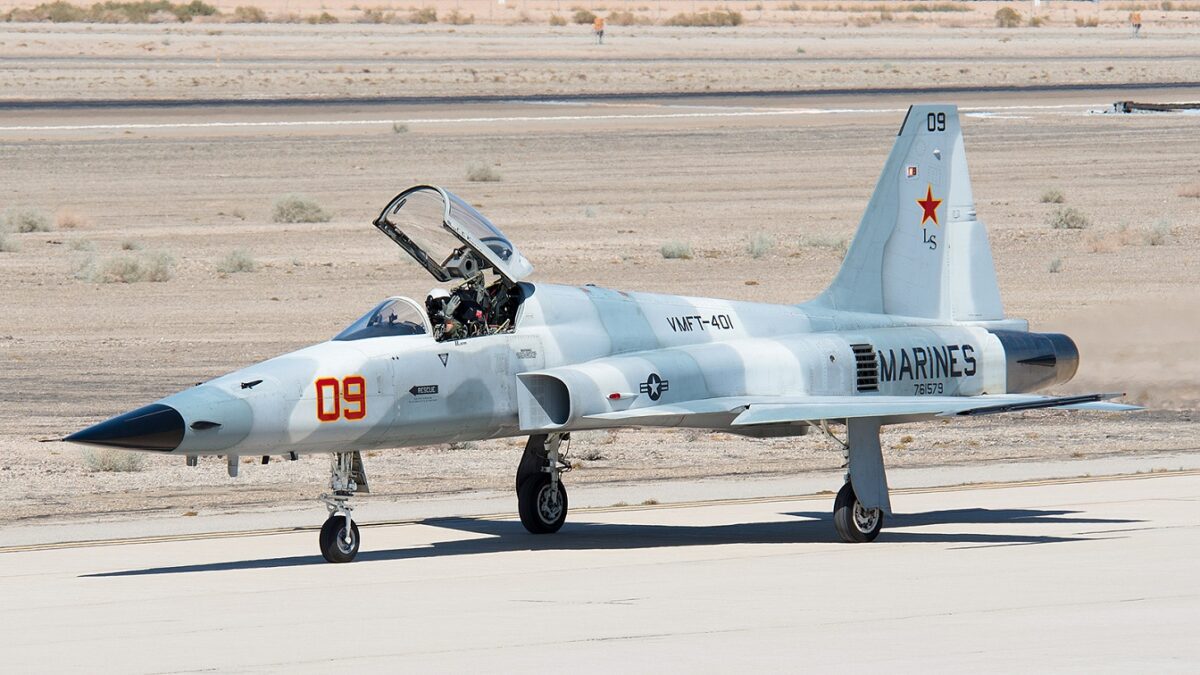After blasting onto the scene in the late 1950s, Northrop Grumman’s F-5 light attack aircraft served through decades of the Cold War and operated extensively in the Vietnam War.
There were many variants and upgrades over the years, and the first F-5A and F-5B aircraft were designed as lightweight, “highly aerodynamic” fighters powered by two high-thrust General Electric J85 engines.
Advancing the F-5
The second generation F-5E arrived in 1972, an upgrade that included more powerful engines, larger fuel capacity, greater wing area, air-to-air refueling, and improved avionics such as air-to-air radar. The aircraft, and the upgraded variant in particular, were primarily used for international allies and flew with Mexico, Brazil, Taiwan, South Korea, Spain, Honduras, Chile, and others.
The aircraft has a maximum speed of Mach 1.63 and hundreds of F-5s have also been in service with the U.S. Navy and Marine Corps in recent years. As a “light fighter,” the aircraft only weighs 9,000 pounds and operates with a max take-off weight of 24,000 pounds. This would suggest the aircraft is capable of carrying many weapons including air-dropped bombs, rockets, missiles, and what’s called a M39A2 revolver cannon. There are a total of seven hard points on the aircraft that offer the configured ability to fire the AIM-9 Sidewinder air-to-air missile, AIM 120 AMRAAM, and AGM- 65 Maverick. These weapons are critical air-to-air and air-to-ground weapons able to track and destroy enemy aircraft as well as pockets of maneuvering ground troops.
Lightweight and Agile
Although the F-5 was a lightweight aircraft not intended to rival advanced air defenses, its extensive air-to-air and air-to-ground armaments likely offered unique air-combat support for more permissive environments or counterinsurgency types of operations. For this reason, it makes sense the aircraft would be considered useful for Vietnam as the North Vietnamese did not have advanced air defense systems and an aircraft such as the F-5 could attack enemy airplanes in the air while also maneuvering into position to support ground forces.
An interesting write-up from aviationist Joe Baugher explains that Vietnamese crews very much liked the F-5E/Fs due to “comfortable cockpits and ease of handling.” However, Baugher explains there were also challenges with the aircraft’s sustainability for combat operations, stating “the lack of spare parts and replacements gradually took its toll, and led to a need for cannibalization and to the gradual reduction of the numbers of F-5Es available for service.”
It is not surprising, given its role in Vietnam, that the F-5 wound up evolving into a reconnaissance aircraft variant as well called the RF-5 Tigereye. This aligns with its primary role in counterinsurgency and close air support as it could also perform scout missions, operational surveillance, and forward reconnaissance.
It makes sense that the aircraft wound up influencing the designs of the F/A-18 and YF-17 as it has an elongated rounded fuselage with a canopy and pointed nose structure similar to the aircraft that succeeded it.

MiG-28 or What Is Really an F-5. Image Credit: Creative Commons.
About the Author
Kris Osborn is the Military Affairs Editor of 19FortyFive and President of Warrior Maven – Center for Military Modernization. Osborn previously served at the Pentagon as a Highly Qualified Expert with the Office of the Assistant Secretary of the Army—Acquisition, Logistics & Technology. Osborn has also worked as an anchor and on-air military specialist at national TV networks. He has appeared as a guest military expert on Fox News, MSNBC, The Military Channel, and The History Channel. He also has a Masters Degree in Comparative Literature from Columbia University.

